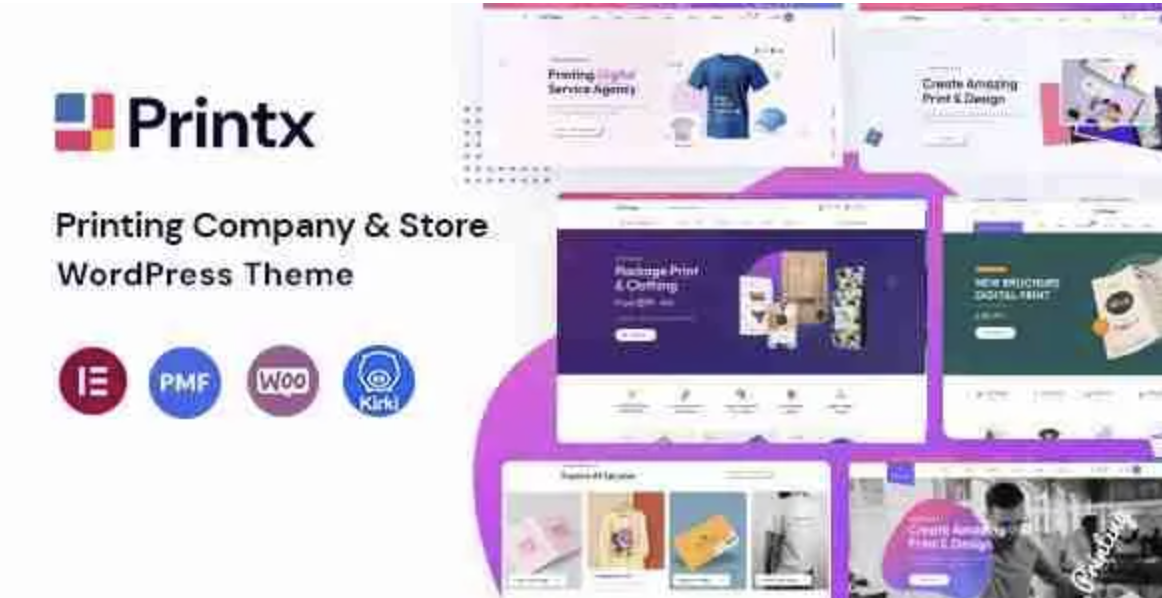From Pixels to Press: Productized Options, Honest Timelines, and Snappy UX in Printx

Most printing businesses don’t lose customers because their colors aren’t vibrant enough; they lose them because the website makes quoting confusing, proofing slow, uploads flaky, and checkout unclear—especially on phones. After helping a regional print shop replace three disconnected tools (quote forms, proof approvals, and shipping updates) with one predictable stack, I standardized the build workflow around Printx. The goal: ship a storefront that sells like a seasoned CSR (Customer Service Rep), performs like a static site, and stays editable by non-engineers without breaking layout. What follows is the long-form field note I wish I’d had on day one—tuned for the django.cn community, with examples that integrate a Python/Django back office. — gplpal
I keep extensions boring and predictable. New capabilities (forms, reviews, analytics, or shipping rate helpers) are added sparingly from a small, vetted library of WordPress Themes and companion modules, so pages remain fast and teams avoid plugin drift.
What a modern print site must do (beyond “look premium”)
- Quote clearly, book fast. A buyer should understand price drivers (size, stock, coating, run size) within one fold, and get a live total without a sales call.
- Upload once, safely. Accept common formats, checksum uploads, store previews, and warn about missing bleed or low DPI before checkout.
- Proof without drama. One link, desktop-and-mobile friendly, with version history and a clear “approved/needs changes” state.
- Track with context. Milestones should read like a CSR wrote them: “Queued → On press → Finishing → Packed → With carrier.”
- Perform calmly. LCP is text + poster, CLS is near zero, and INP stays snappy on entry-level Android.
- Stay editable. Staff can update prices, cutoffs, and banners at 11 p.m. without breaking the grid.
Page grammar for Printx (sections → rows → blocks)
- Sections (macro): Hero / Product Families / Calculator / Proofing Explainer / Turnaround & Shipping / Reviews / FAQ / CTA
- Rows (grid): 1–3 columns mapped to a 12-column mental model; predictable stacking on mobile
- Blocks (atoms): headings, short copy, icon tiles, price table, option selectors, upload widget, timeline, badges, forms, CTA buttons
Guardrail: copy & media can change anytime; structure only changes via saved patterns. This single rule prevents long-term drift.
Token set (print-friendly defaults you won’t regret)
- Spacing: 24 / 32 / 48 / 72 vertical rhythm
- Type scale: H1 40/48, H2 32/40, H3 24/32, body 16/28
- Color: brand, accent, neutral-900, neutral-200; keep adequate contrast over imagery
- Radius: 8 for cards, 24 for prominent panels (hero, calculator)
- Shadow: subtle on cards; none on lists or tables
- Buttons: primary = accent solid; secondary = text link; never two primaries per fold
Information architecture that sells print, not pixels
- Home — promise, product families, calculator teaser, trust snapshot, CTA
- Catalog — families (business cards, brochures, packaging, wide-format), each with a guided path
- Product detail — options → live price → upload → proof policy → turnaround → CTA
- Quote builder — configurable matrix; friendly errors; “save quote” and “share link”
- Proofing — approvals, change requests, annotations (simple wins), version history
- Order status — milestone timeline, carrier handoff, re-order button
- Help — file setup, bleed/DPI, color notes, finishing diagrams
- About/Contact — equipment snapshot, cutoffs, pickup windows, service area, team tiles (short)
FAQ (straight answers)
Can we hide complex options from first-time buyers?
Yes. Start with defaults and reveal advanced options progressively. Pros will find them; newcomers won’t drown.
What about variable data (mail merges)?
Treat it as a separate flow: CSV template, mapping preview, and a per-record proof snapshot if feasible. Price by base + record count + setup.
How do we explain color differences?
Plainly: state profiles, tolerances, and sample policies. Buyers forgive physics; they don’t forgive surprises.
Is a live chat necessary?
Only if staffed. A responsive “We reply within 15 minutes during production hours” email beats an idle chat bubble.
If I had to start tomorrow
- Set tokens first; lock spacing/type/contrast.
- Ship one approved pattern set; clone it ruthlessly.
- Stand up the calculator and proofing skeleton before polishing marketing.
- Keep payloads small, pages calm, and microcopy humane.
- Review weekly; fix the top three issues; move on.
— gplpal






